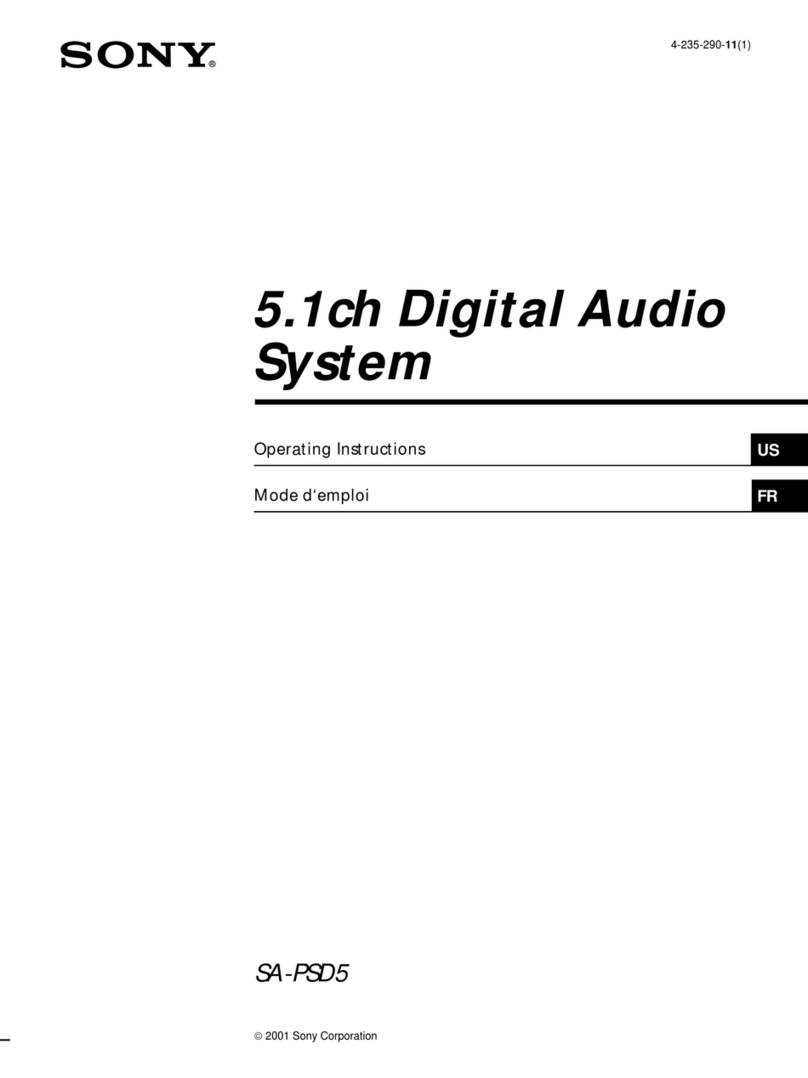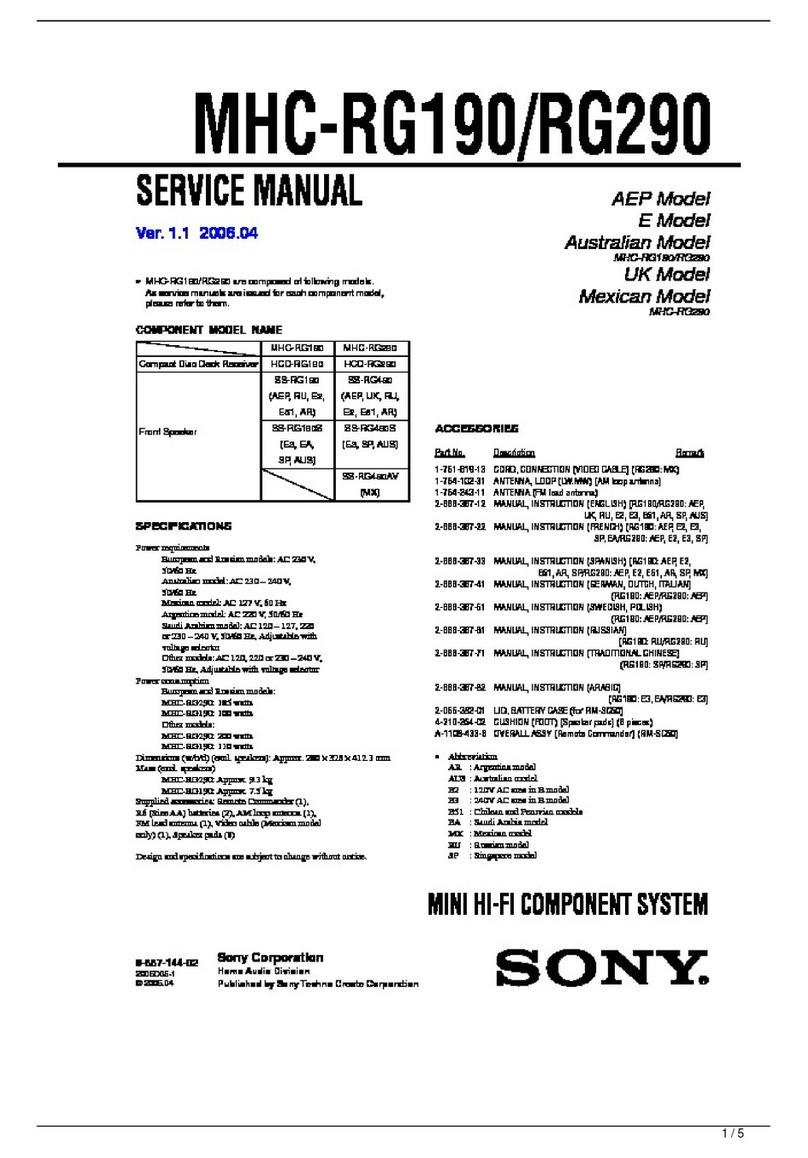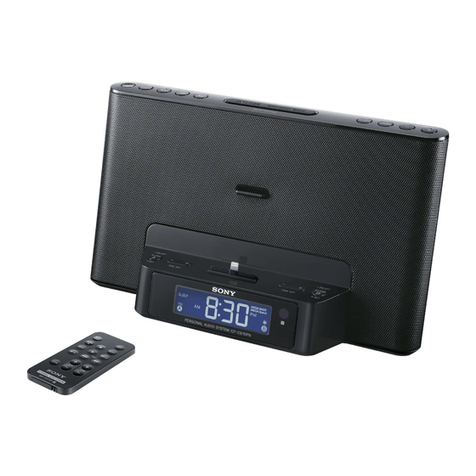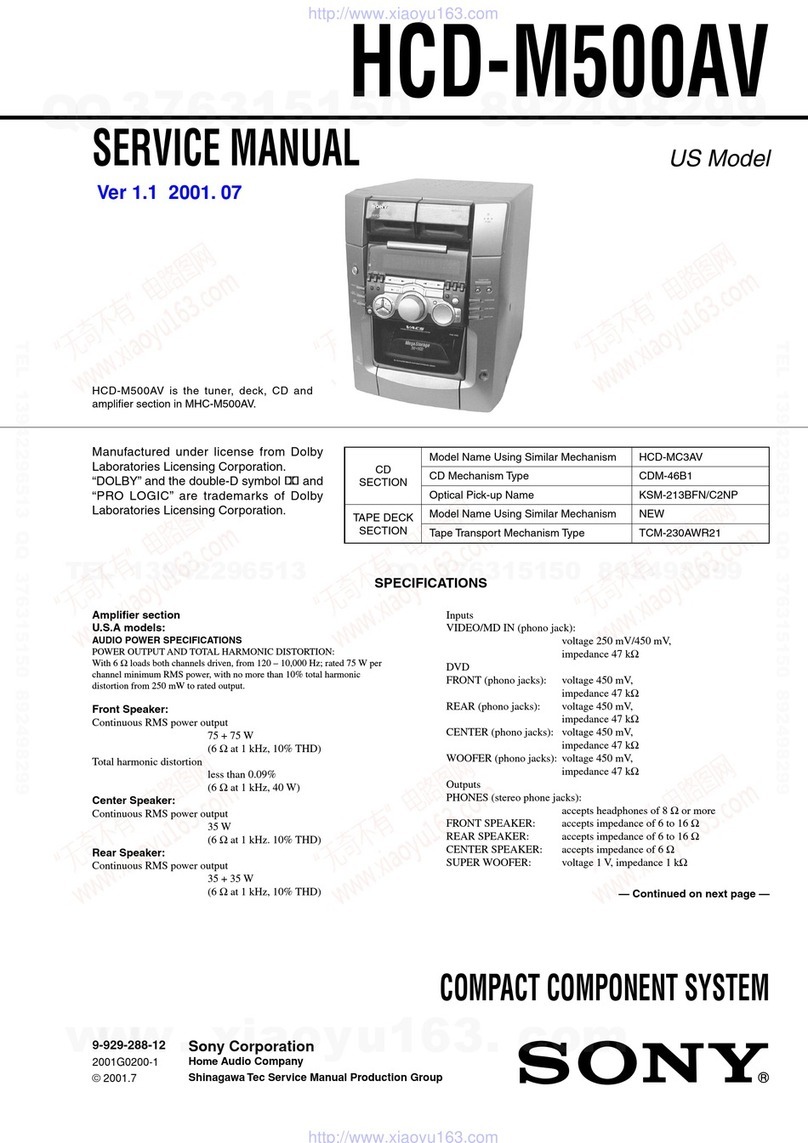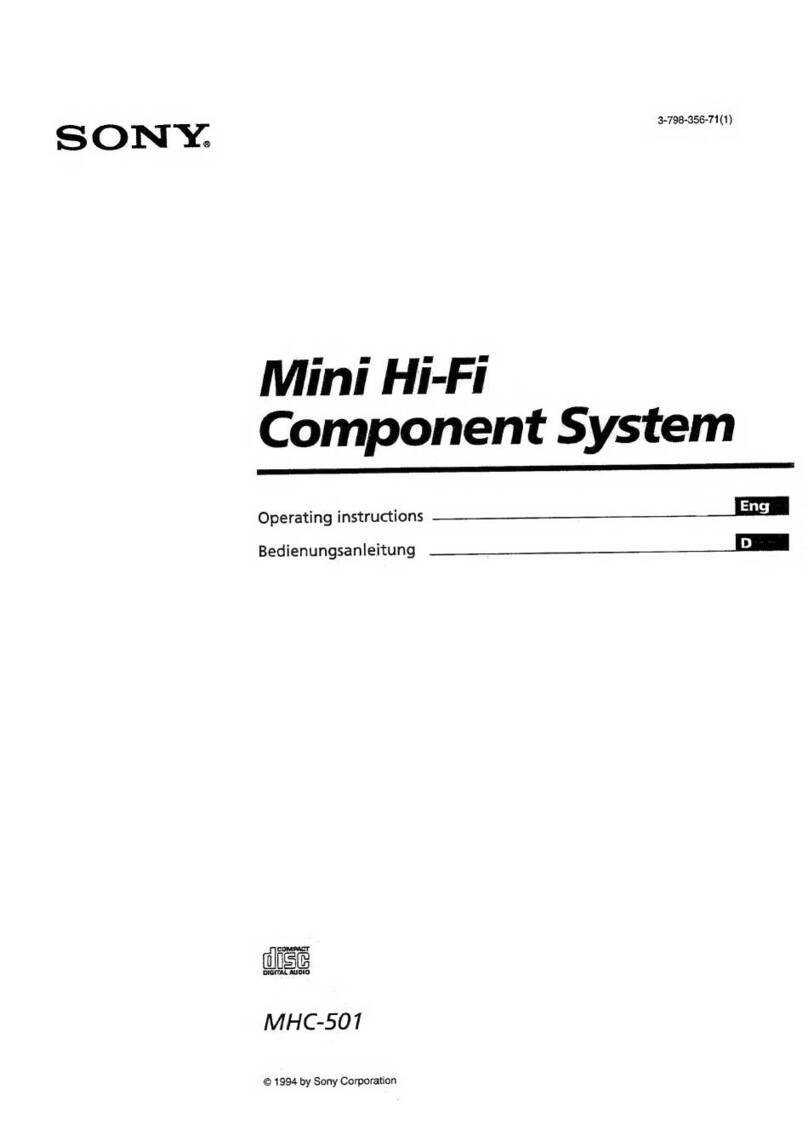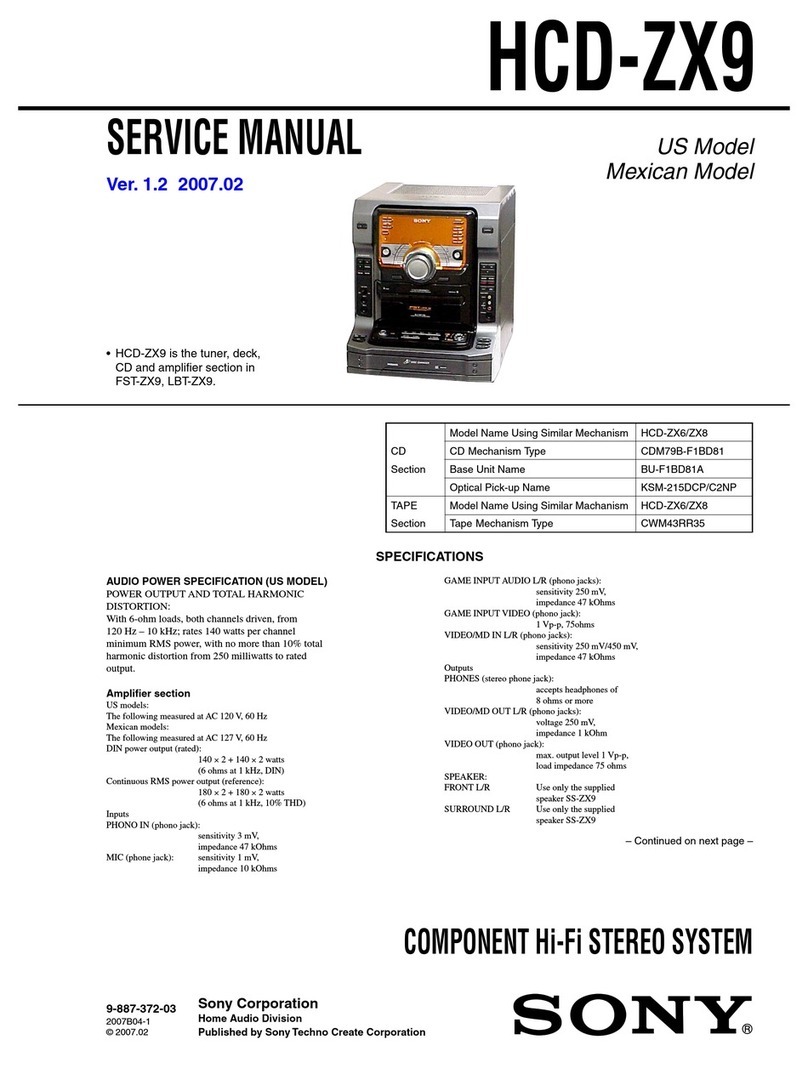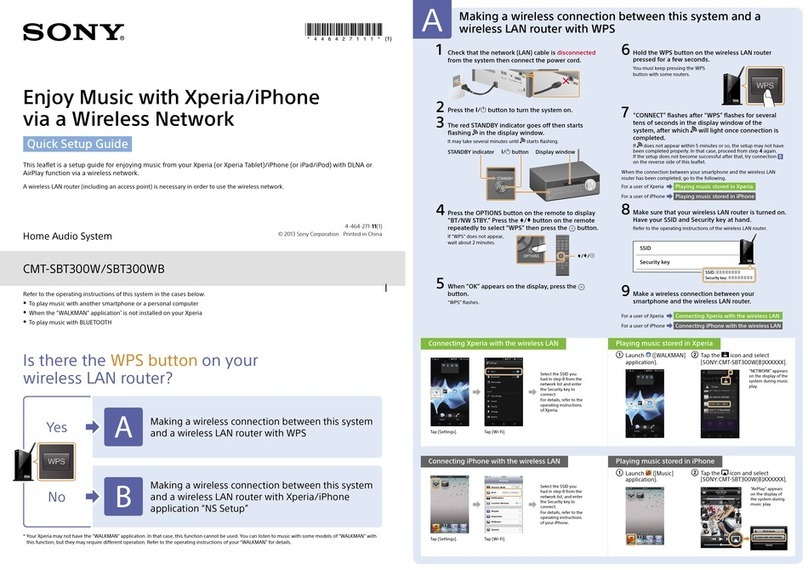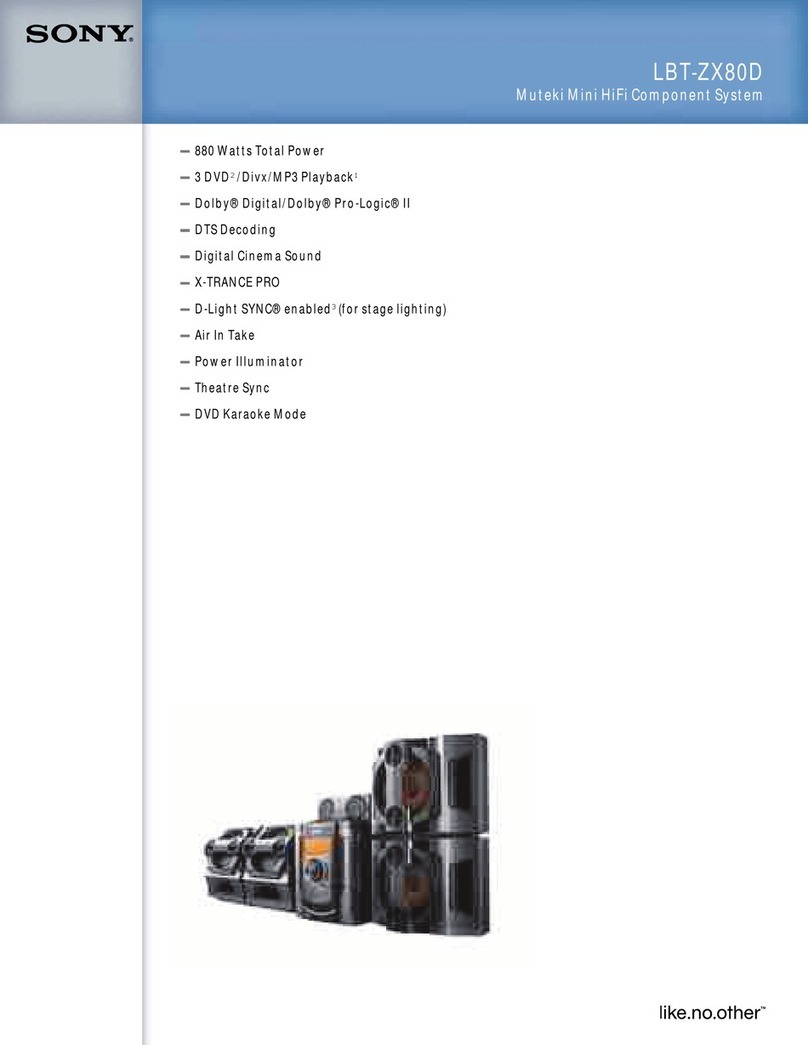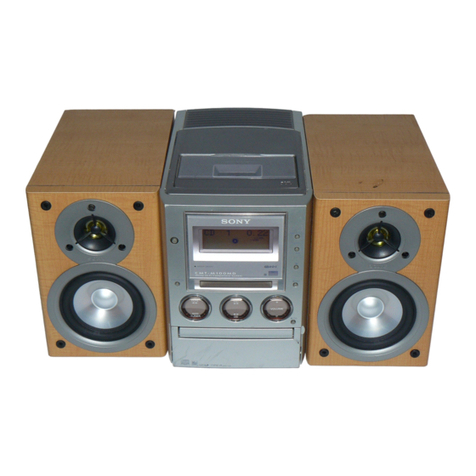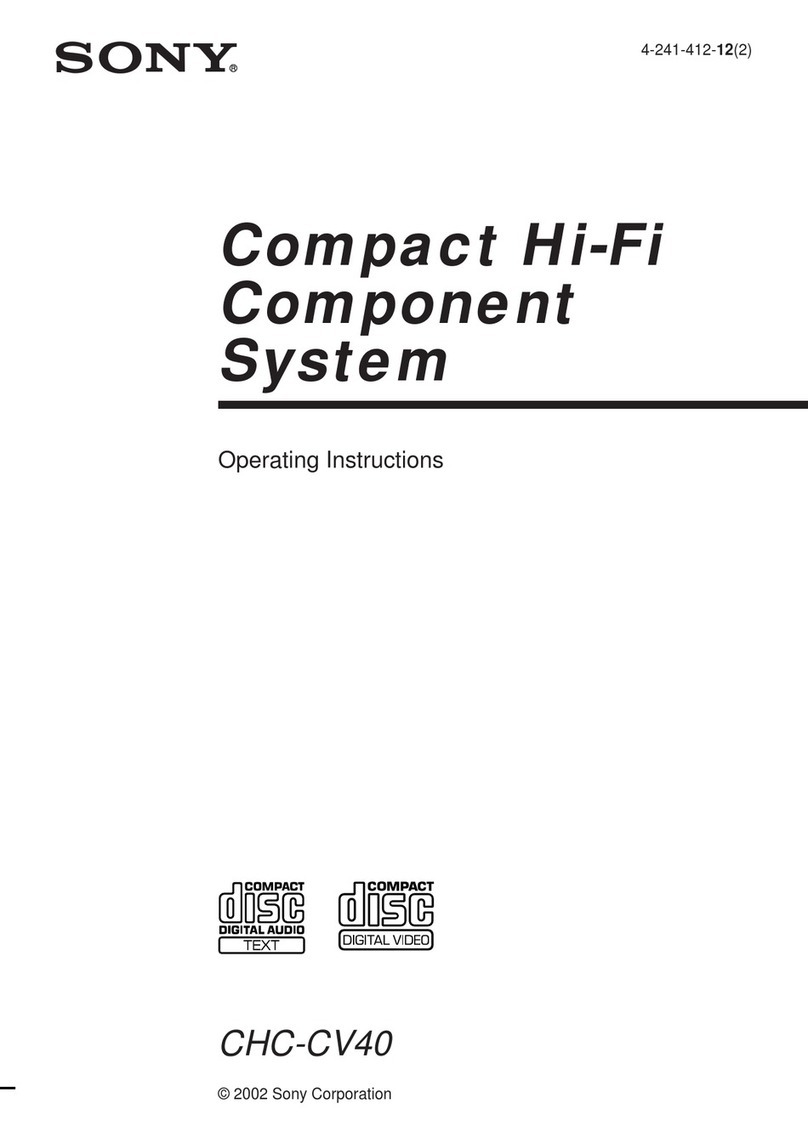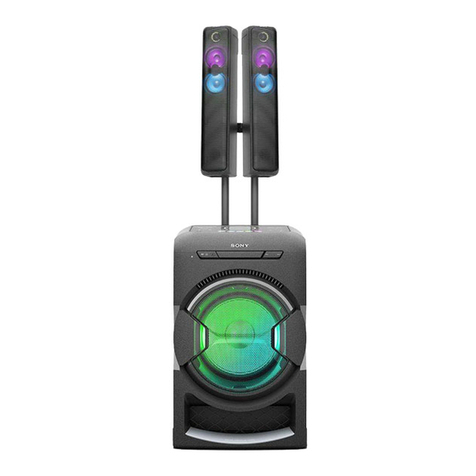3
HCD-RG190/RG290
TABLE OF CONTENTS
1. SERVICING NOTES ............................................... 4
2. GENERAL ................................................................... 5
3. DISASSEMBLY
3-1. Disassembly Flow ........................................................... 6
3-2. Case (Side-L), Case (Side-R) .......................................... 7
3-3. Case (Top) ....................................................................... 7
3-4. LID (CD) ......................................................................... 8
3-5 CD Mechanism Deck
(CDM74KF-K6BD83S: Except Mexican model)
(CDM74KF-F1BD84: Mexican model) .......................... 8
3-6. Front Panel Block ............................................................ 9
3-7. Mecha Deck (CWN42FF609) ......................................... 9
3-8. Back Panel Section .......................................................... 10
3-9. MAIN Board.................................................................... 10
3-10. BD Board (Mexican model),
CD Board (Except Mexican model) ................................ 11
3-11. DRIVE Board, SW Board ............................................... 11
3-12. Optical Pick-up Block ..................................................... 12
3-13. SENSOR Board ............................................................... 12
3-14. MOTOR (TB) Board ....................................................... 13
3-15. MOTOR (LD) Board ....................................................... 13
4. TEST MODE.............................................................. 14
5. MECHANICAL ADJUSTMENTS ....................... 17
6. ELECTRICAL ADJUSTMENTS ......................... 18
7. DIAGRAMS
7-1. Block Diagram – CD SERVO Section – ......................... 21
7-2. Block Diagram – MAIN Section – .................................. 22
7-3. Block Diagram – AMP/VIDEO Section – ...................... 23
7-4. Block Diagram
– PANEL/POWER SUPPLY Section – ........................... 24
7-5. Printed Wiring Board – CD Board
(Except RG290: MX model) – ........................................ 26
7-6. Schematic Diagram – CD Board
(Except RG290: MX model) – ........................................ 27
7-7. Printed Wiring Board – BD Board
(RG290: MX model) – .................................................... 28
7-8. Schematic Diagram – BD Board
(RG290: MX model) – .................................................... 29
7-9. Printed Wiring Boards – CHANGER Section –.............. 30
7-10. Schematic Diagram – CHANGER Section – .................. 31
7-11. Printed Wiring Board – DECK Board – .......................... 32
7-12. Schematic Diagram – DECK Board –............................. 33
7-13. Printed Wiring Board – MAIN Board
(Except RG290: MX model) – ........................................ 34
7-14. Schematic Diagram – MAIN Board (1/3)
(Except RG290: MX model) – ........................................ 35
7-15. Schematic Diagram – MAIN Board (2/3)
(Except RG290: MX model) – ........................................ 36
7-16. Schematic Diagram – MAIN Board (3/3)
(Except RG290: MX model) – ........................................ 37
7-17. Printed Wiring Board – MAIN Board
(RG290: MX model) – .................................................... 38
7-18. Schematic Diagram – MAIN Board (1/3)
(RG290: MX model) – .................................................... 39
7-19. Schematic Diagram – MAIN Board (2/3)
(RG290: MX model) – .................................................... 40
7-20. Schematic Diagram – MAIN Board (3/3)
(RG290: MX model) – .................................................... 41
7-21. Printed Wiring Board – MIC.AUX. HP Board – ............ 42
7-22. Schematic Diagram – MIC. AUX. HP Board –............... 43
7-23. Printed Wiring Board – POWER Board (RG190) – ........ 44
7-24. Schematic Diagram – POWER Board (RG190) – .......... 45
7-25. Printed Wiring Board – POWER Board (RG290) – ........ 46
7-26. Schematic Diagram – POWER Board (RG290) – .......... 47
7-27. Printed Wiring Boards – CD-G Section
(RG290: MX model) – .................................................... 48
7-28. Schematic Diagram – CD-G Section
(RG290: MX model) – .................................................... 49
7-29. Printed Wiring Board – PANEL Board – ........................ 50
7-30. Printed Wiring Boards – KEY Section –......................... 51
7-31. Schematic Diagram – PANEL/KEY Section – ............... 52
7-32. Printed Wiring Board
– TRANSFORMER Board (RG190) – ........................... 54
7-33. Schematic Diagram
– TRANSFORMER Board (RG190) – ........................... 55
7-34. Printed Wiring Board
– TRANSFORMER Board (RG290) – ........................... 56
7-35. Schematic Diagram
– TRANSFORMER Board (RG290) – ........................... 57
8. EXPLODED VIEWS
8-1. Case Section .................................................................... 74
8-2. PANEL Board Section..................................................... 75
8-3. Lid (Top) Section............................................................. 76
8-4. Front Panel Section ......................................................... 77
8-5. MAIN Board Section....................................................... 78
8-6. POWER Board, SUB WOOFER Board Section ............. 79
8-7. Chassis Section................................................................ 80
8-8. CD Mechanism Deck Section-1
(CDM74KF-K6BD83S) (Except Mexican model)/
(CDM74KF-F1BD84) (Mexican model) ........................ 81
8-9. CD Mechanism Deck Section-2
(CDM74KF-K6BD83S) (Except Mexican model)/
(CDM74KF-F1BD84) (Mexican model) ........................ 82
9. ELECTRICAL PARTS LIST................................ 83
•Abbreviation
MX: Mexican model


